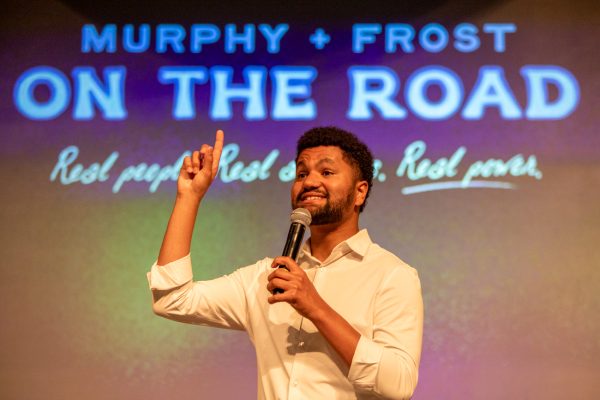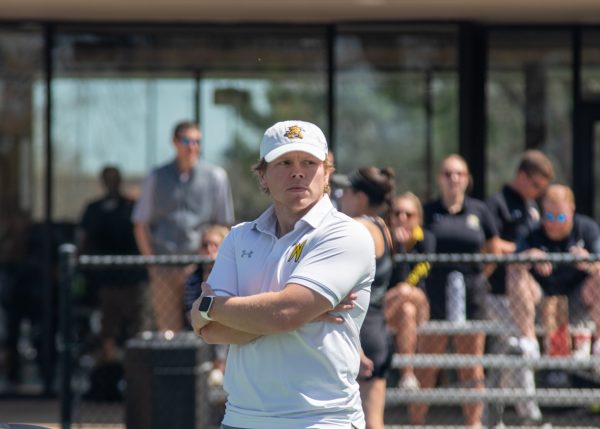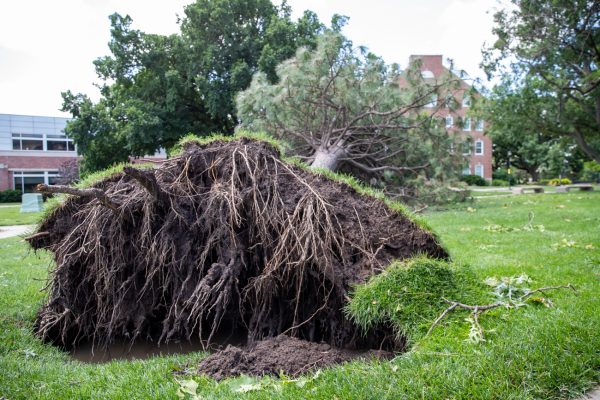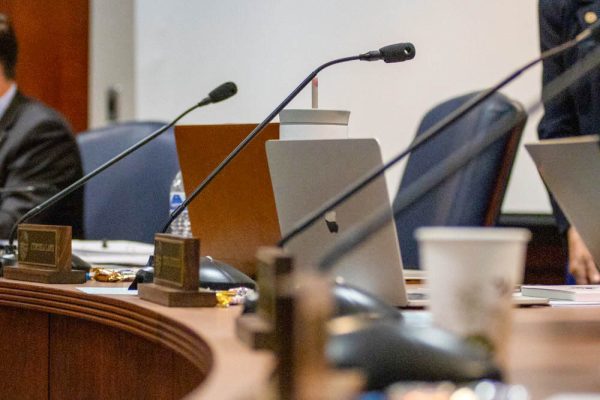Science and nature knit together in ‘The Beautiful Math of Coral’
Most people would fail to find a common thread in art, mathematics, marine biology and physics. Margaret Wertheim and her twin sister, Christine Wertheim, can.
On Friday, Margaret Wertheim gave a presentation titled, “Nature’s Toolbox: The Beautiful Math of Coral,” at Wichita State’s CAC theater. She is a science writer and co-founder of the Institute for Figuring in Los Angeles.
Global warming has caused an increase in the amount of carbon dioxide absorbed by the oceans, leading to a rise in the temperature of the water. The result is increased water acidification and a bleaching of the coral reefs.
Since the conception of the idea of crocheting a coral reef in 2005, Margaret has been working with Christine on giving the project greater momentum.
The Crochet Coral Reef project is a conglomeration of several crochet pieces assembled in order to imitate the structure of coral reefs.
“The reason for this is more mathematical than it is an artistic choice,” Margaret said.
The idea has gone on to become a massive movement, with thousands of participants. These include hobbyists, artists, school children and even people from correctional facilities.
More than 99 percent of the people involved have been women. Wertheim called the project “feminist” because it promotes women’s labor and the traditional women’s handicraft. The project has been presented to institutions such as the Smithsonian and the Hayward Gallery in London.
“To me, it is incredibly important that we keep that connection with domestic female labor,” Magaret said.
Hyperbolic geometry has negative curvature. And while it is incredibly difficult to model it using conventional figuring techniques, crocheting imitates hyperbolic geometry naturally, and therefore, became the craft the Wertheim’s used to imitate coral reefs.
In the initial stages, the crochets imitated mathematically pure hyperbolic equations. As it progressed, the crochets were more chaotic, and the deviations from the pure mathematical hyperbolae resulted in realistic looking coral reefs. The project continues to morph.
“My sister recently has been making some (that) … don’t look like corals, but look like some sort of giant thing that could have evolved early on in the history of life,” Margaret said. “We wanted to move away from representing something specific as it were as imaginative vision of what life could be,” Wertheim said.
Mary Goltl said the talk was motivationa.
“I was inspired by her talk and what she had to say about collectiveness and ‘We’re all in this together,’” Goltl said. “And it takes the effort from all of us to make changes in the world.”







